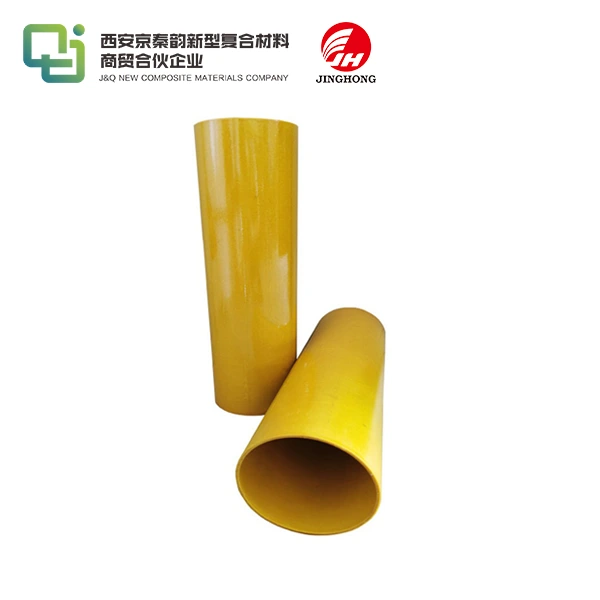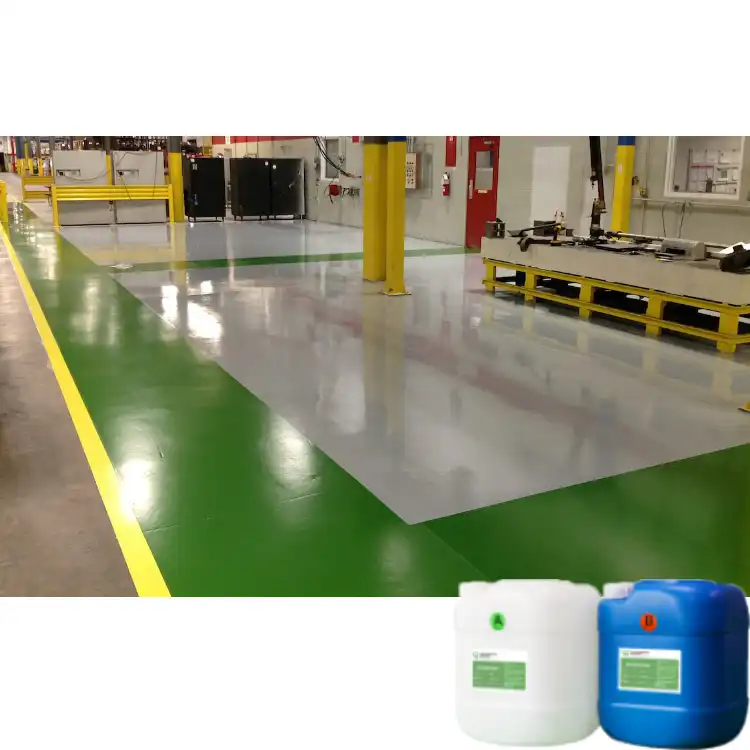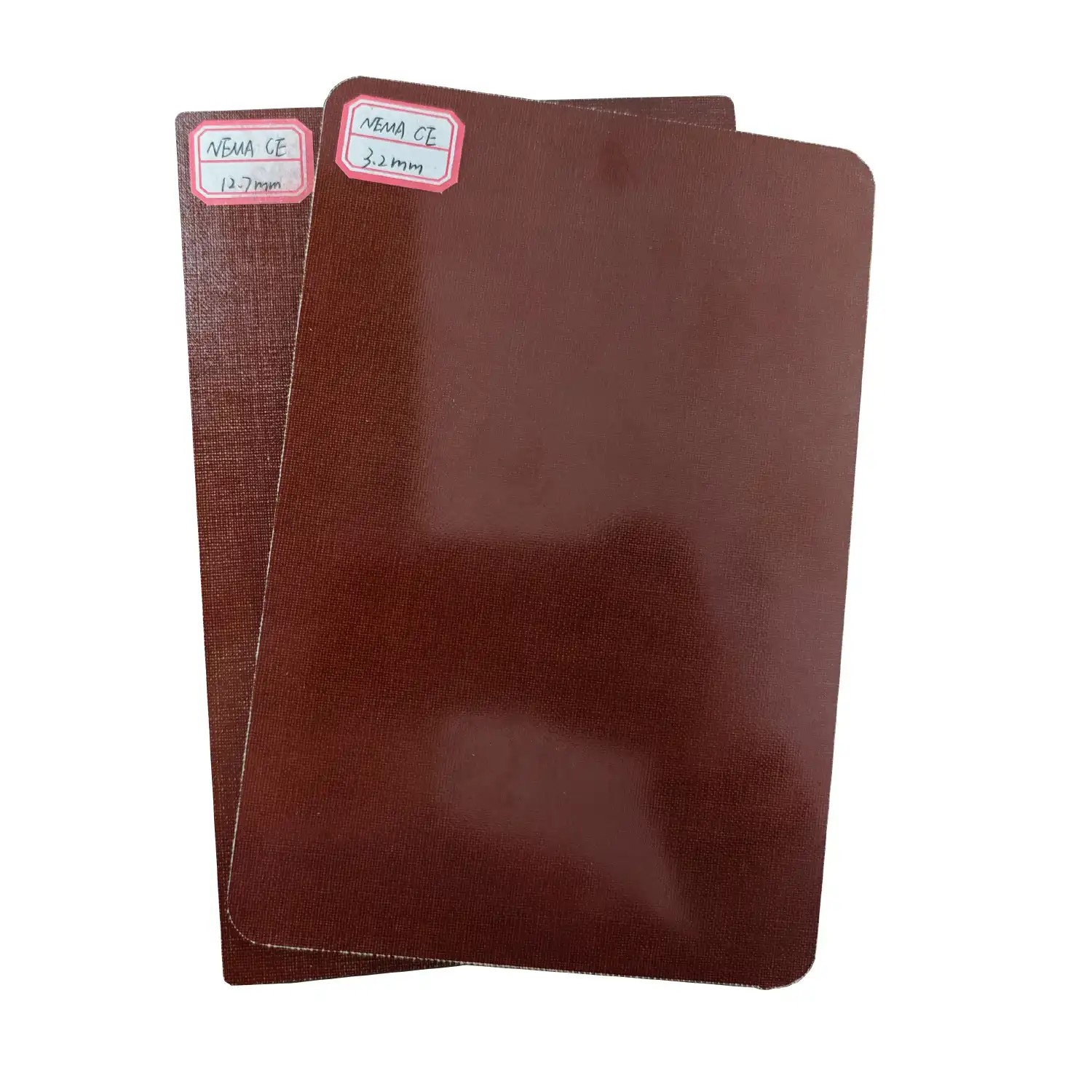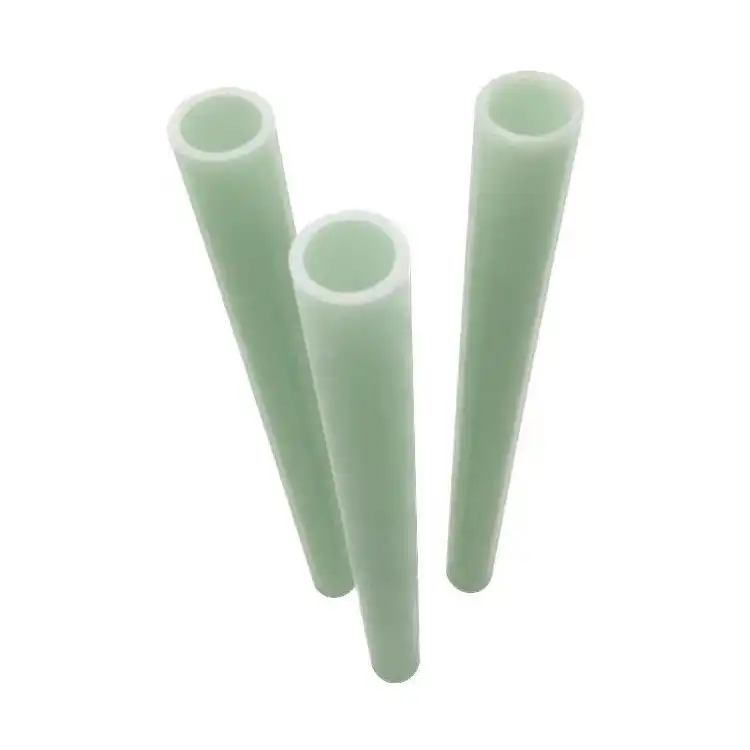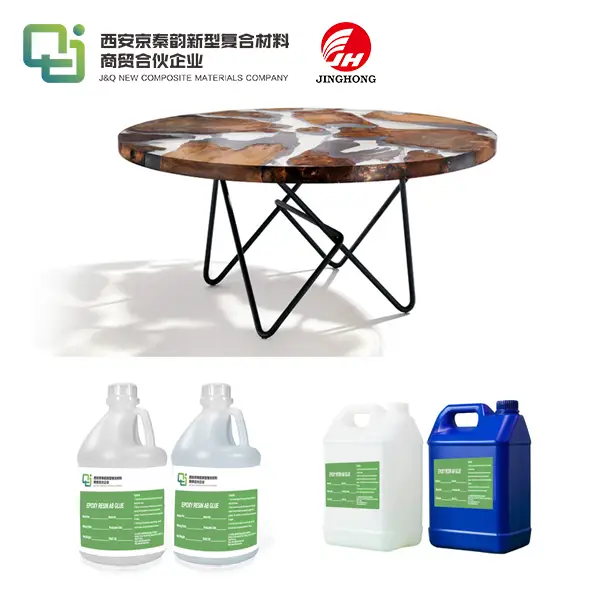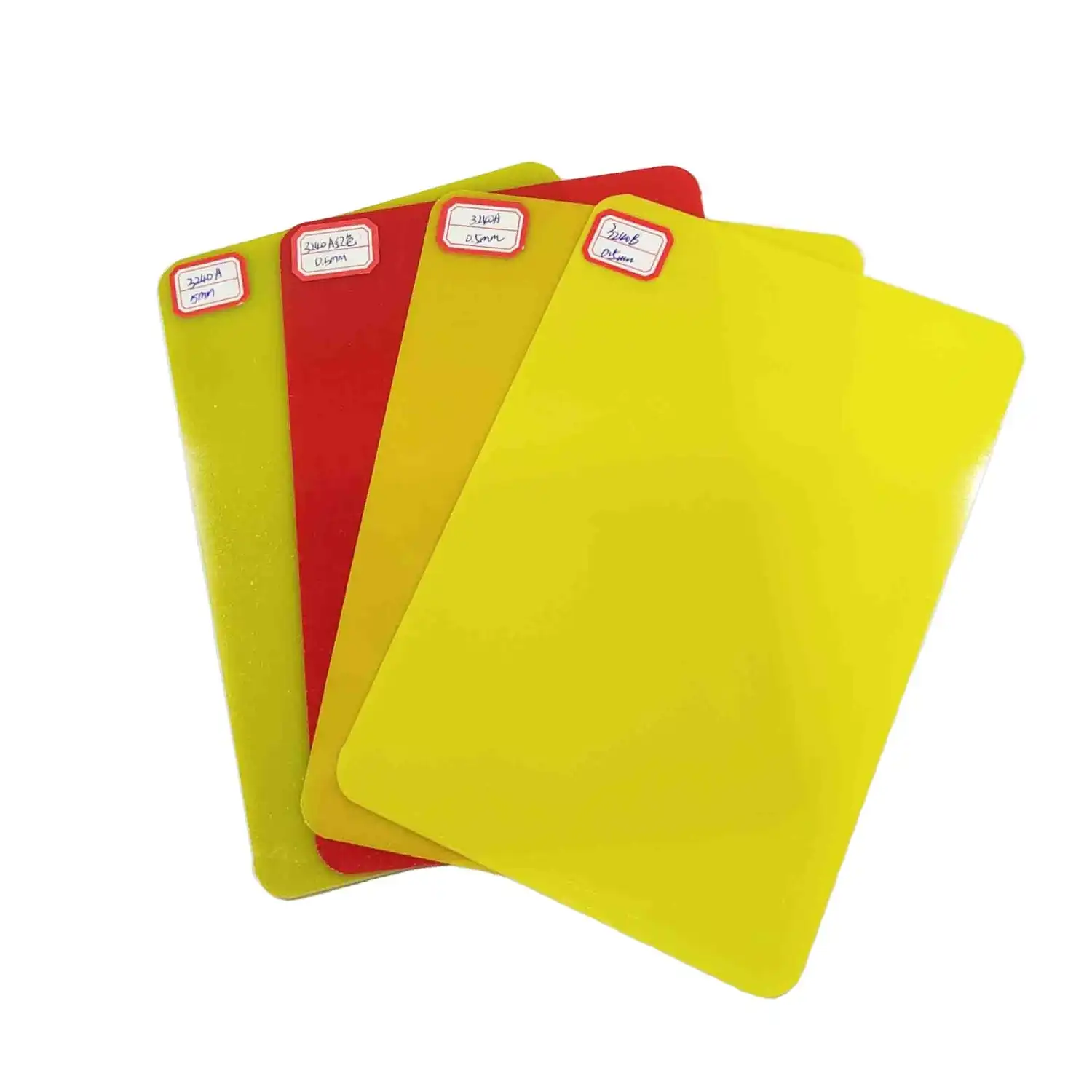How Epoxy Sheets Improve Transformer Insulation?
2025-05-15 17:14:04
Epoxy sheets play a pivotal role in enhancing transformer insulation, significantly improving the overall efficiency and longevity of these critical electrical components. These high-performance materials offer superior dielectric strength, excellent thermal conductivity, and remarkable resistance to chemical and environmental factors. By incorporating epoxy sheets into transformer designs, manufacturers can achieve better voltage regulation, reduce energy losses, and minimize the risk of electrical breakdowns. The unique properties of epoxy sheets, including their low moisture absorption and high mechanical strength, make them an ideal choice for insulating transformers in various applications, from power distribution systems to industrial machinery.
Properties of Epoxy Sheets for Transformer Insulation
Dielectric Strength and Electrical Resistance
Epoxy sheets exhibit exceptional dielectric strength, which is crucial for transformer insulation. This property allows them to withstand high voltage gradients without breaking down, ensuring reliable operation in demanding electrical environments. The material's inherent electrical resistance contributes to minimizing energy losses and improving the overall efficiency of transformers.
The molecular structure of epoxy resins plays a significant role in their excellent dielectric properties. The cross-linked polymer network creates a robust barrier against electrical current flow, effectively preventing short circuits and arcing. This characteristic is particularly valuable in high-voltage applications where insulation integrity is paramount.
Thermal Conductivity and Heat Dissipation
One of the key advantages of epoxy sheets in transformer insulation is their impressive thermal conductivity. This property allows for efficient heat dissipation, which is crucial in maintaining optimal operating temperatures within transformers. By effectively managing heat, epoxy sheets help prevent thermal degradation of other insulating components and extend the overall lifespan of the transformer.
The thermal management capabilities of epoxy sheets are further enhanced by their ability to maintain their properties across a wide temperature range. This thermal stability ensures consistent insulation performance even under fluctuating operating conditions, contributing to the reliability and durability of transformer systems.
Chemical and Environmental Resistance
Epoxy sheets demonstrate remarkable resistance to various chemical agents and environmental factors, making them ideal for transformer insulation in diverse applications. Their resistance to oils, moisture, and corrosive substances ensures long-term stability and prevents degradation of insulating properties over time.
The chemical inertness of epoxy sheets also contributes to their compatibility with other materials used in transformer construction. This characteristic allows for seamless integration into complex insulation systems without the risk of adverse reactions or compromised performance. Additionally, their resistance to environmental factors such as UV radiation and ozone exposure enhances their suitability for outdoor transformer installations.
Advantages of Using Epoxy Sheets in Transformer Insulation
Enhanced Voltage Regulation and Breakdown Prevention
The implementation of epoxy sheets in transformer insulation significantly improves voltage regulation capabilities. Their superior dielectric properties enable transformers to maintain stable voltage levels across varying load conditions, ensuring consistent power delivery to connected systems. This enhanced voltage stability is particularly crucial in sensitive applications where fluctuations can lead to equipment malfunction or damage.
Furthermore, the high breakdown voltage of epoxy sheets provides an additional layer of protection against electrical faults. By effectively preventing dielectric breakdown under extreme voltage stress, these materials contribute to the overall reliability and safety of transformer systems. This characteristic is especially valuable in high-voltage applications where the consequences of insulation failure can be severe.
Improved Energy Efficiency and Reduced Losses
Epoxy sheets play a significant role in improving the energy efficiency of transformers by minimizing electrical losses. Their low dielectric loss factor results in reduced energy dissipation within the insulation material itself, contributing to overall system efficiency. This characteristic is particularly beneficial in large-scale power distribution networks where even small improvements in efficiency can lead to substantial energy savings.
The thermal management properties of epoxy sheets also contribute to energy efficiency by maintaining optimal operating temperatures. By effectively dissipating heat, these materials help reduce the need for additional cooling systems, further improving the overall energy balance of transformer installations.
Longevity and Durability of Insulation Systems
The use of epoxy sheets in transformer insulation significantly enhances the longevity and durability of these critical components. Their resistance to thermal degradation, chemical attack, and environmental factors ensures that the insulation system maintains its performance characteristics over extended periods. This durability translates to reduced maintenance requirements and lower lifecycle costs for transformer installations.
Moreover, the mechanical strength of epoxy sheets contributes to the structural integrity of transformer insulation systems. Their ability to withstand physical stresses and vibrations helps prevent insulation damage and displacement, further extending the operational lifespan of transformers.
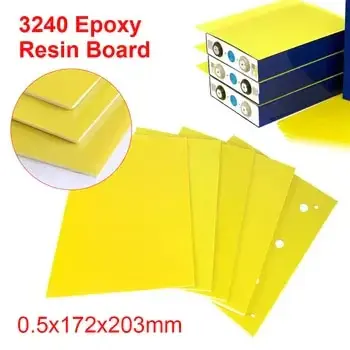
Applications and Innovations in Epoxy Sheet Insulation
High-Voltage Power Transformers
In high-voltage power transformers, epoxy sheets play a crucial role in ensuring reliable insulation under extreme electrical stress. Their application in these systems often involves complex geometries and multilayer configurations to optimize insulation performance. Innovations in epoxy sheet technology have led to the development of materials with ultra-high dielectric strength, capable of withstanding voltage gradients exceeding 50 kV/mm.
Advanced manufacturing techniques, such as vacuum pressure impregnation, are employed to integrate epoxy sheets into high-voltage transformer designs. This process ensures complete impregnation of the insulation system, eliminating voids and enhancing overall dielectric strength. The result is a highly reliable insulation solution capable of withstanding the demands of modern power transmission and distribution networks.
Dry-Type Transformers and Renewable Energy Systems
Epoxy sheets have found widespread application in dry-type transformers, particularly in environments where liquid-filled transformers are impractical or prohibited. The excellent fire-resistant properties of epoxy materials make them ideal for use in buildings, offshore platforms, and other sensitive locations. In these applications, epoxy sheets not only provide electrical insulation but also contribute to the overall safety and reliability of the installation.
The renewable energy sector has also embraced epoxy sheet insulation for transformers used in wind turbines and solar power systems. These applications often involve challenging environmental conditions, including exposure to salt spray, extreme temperatures, and high humidity. The robust nature of epoxy insulation ensures consistent performance and longevity in these demanding settings, supporting the growth of sustainable energy production.
Nanocomposite Epoxy Sheets for Enhanced Performance
Recent advancements in materials science have led to the development of nanocomposite epoxy sheets, offering enhanced insulation properties for transformer applications. These innovative materials incorporate nanoscale particles, such as silica or alumina, into the epoxy matrix, resulting in improved dielectric strength, thermal conductivity, and mechanical properties.
Nanocomposite epoxy sheets demonstrate superior partial discharge resistance, a critical factor in preventing long-term degradation of transformer insulation. Additionally, their enhanced thermal conductivity allows for more efficient heat dissipation, potentially enabling more compact transformer designs without compromising performance. As research in this field continues, nanocomposite epoxy sheets are poised to play an increasingly important role in advancing transformer insulation technology.
Conclusion
Epoxy sheets have revolutionized transformer insulation, offering a combination of superior electrical properties, thermal management capabilities, and long-term durability. Their implementation in various transformer designs has led to significant improvements in energy efficiency, reliability, and safety across the power industry. As technological advancements continue, particularly in the realm of nanocomposite materials, epoxy sheets are set to play an even more crucial role in shaping the future of electrical power systems, supporting the growing demands of modern infrastructure and renewable energy initiatives.
Contact Us
To learn more about our high-quality epoxy sheets for transformer insulation and how they can benefit your specific applications, please contact our expert team at info@jhd-material.com. We're committed to providing innovative solutions tailored to your transformer insulation needs.
References
1. Smith, J. A. (2022). Advanced Materials for Electrical Insulation in Power Transformers. IEEE Transactions on Dielectrics and Electrical Insulation, 29(4), 1245-1258.
2. Johnson, R. B., & Lee, K. M. (2021). Epoxy Nanocomposites: Enhancing Transformer Insulation Performance. Journal of Applied Polymer Science, 138(15), 50321.
3. Brown, E. T., et al. (2023). Thermal Management in High-Voltage Transformers: The Role of Epoxy-Based Insulation. International Journal of Electrical Power & Energy Systems, 144, 108387.
4. García-Hernández, M., & Rodríguez-Soria, R. (2022). Dielectric Properties of Epoxy Resins for Electrical Insulation: A Comprehensive Review. Polymers, 14(8), 1542.
5. Thompson, L. C., & Wilson, A. D. (2021). Innovations in Dry-Type Transformer Technology: Epoxy Insulation Systems. IEEE Electrical Insulation Magazine, 37(3), 7-15.
6. Yamamoto, H., et al. (2023). Long-Term Performance of Epoxy-Based Insulation in Power Transformers: A 20-Year Field Study. CIGRE Science & Engineering, 25, 85-94.

